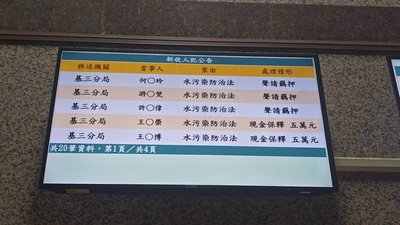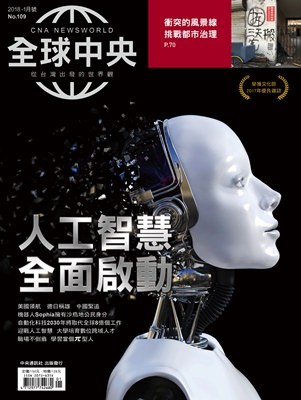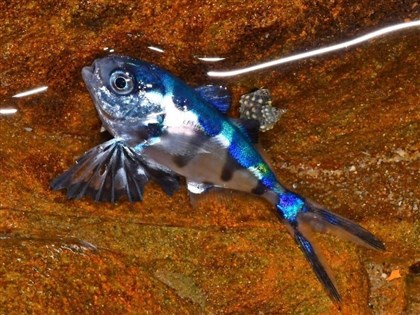追求雅致的中國藝術
撰文及考題設計/British Council 英協教育中心 Brian Welter
中譯/陳怡君 (中央社編譯)
Chinese art takes many forms, from ceramics and landscape paintings to calligraphy and carvings. Throughout the centuries, the emperors played a vital role in developing and promoting these arts. Some, such as Taizong (598-649), were also artists themselves. Emperor Hsuan Tsung (1399-1435) was an accomplished calligrapher and painter. In his artwork he depicted the countryside, individuals, flowers, birds, and even insects.
中國藝術有許多型式,從陶瓷、山水畫到書法與雕刻,縱觀幾世紀以來,帝王在這些藝術的發展與提倡上居功厥偉,有些帝王,如唐太宗(598- 649)本身即是藝術家,明宣宗(1399-1435)的書法與繪畫更是自成一家,鄉間山水、人物、乃至花鳥草蟲都是他的畫作主題。
Chinese writing has always played a dual role, spreading important information from the imperial court to the provinces while also expressing beauty and creativity. Calligraphy, the art of beautiful writing, became a mainstay of Chinese culture. Over the centuries, many different styles have developed.
中國的文字總是扮演雙重角色:從宮廷傳播重要資訊到民間,同時展現美學與創意。書寫的藝術「書法」成為中華文化的精髓,千年以來發展出許多不同流派。 Painting, particularly of landscapes, has been equally important throughout Chinese history. Often, scenes of mountains contrast with a lake or river far below. People, including farmers or fishermen, are depicted as being very small against towering mountains. The effect is to emphasise humans’ insignificance compared to nature’s greatness. Perhaps this was the Chinese way of encouraging humility.
繪畫,特別是山水畫,在整個中國歷史上的角色同樣重要,浩渺的群山映照著下方河流或湖泊是常見的意境。人物,諸如農人或漁夫,對應著高聳的群山被描繪地非常渺小,如此意境用以強調在偉大的自然之中人類的微不足道。也許這是中國文化提倡謙卑的方式。 The Five Dynasties per iod(907-960) saw important developments in Chinese painting. Flowers and birds were common themes, alongside religious subjects. In the court of the Southern Tang dynasty between 937 and 975, an official painting school was founded, signaling deeper involvement of royal authorities in art.
中國繪畫在五代十國時期(907-960)出現重要發展,花鳥畫與宗教性題材成為畫作主題,南唐(937-975)宮廷畫,有了官方繪畫學院的創設,顯現了官方在藝術上更深一層的影響力。5 The Chinese appreciation of bamboo impacted art. Many paintings feature either a small patch of bamboo forest or an individual plant gracefully swaying in the wind or gently curving towards the earth. Bamboo as a material has been used in ar¬chitecture, furniture, and household goods such as pencil holders. These household goods often have carvings of typical Chinese artistic scenes, such as the side of a mountain or a waterfall. Bamboo symbolises purity and dignity.
中國人對竹子的著迷同時也影響了藝術。許多繪畫以一叢竹林或單枝在風中搖曳或優雅地垂地為特色。竹子同樣被用來當作建材、家具乃至筆筒等日常用品,這些日常用品常被雕刻傳統中國藝術的意境,例如山景與瀑布。竹象徵純潔與尊嚴。
However, China may be best known to westerners for its ceramics, including plates, dishes, and vases. Porcelain, which requires greater heat than normal ceramics, is the glassy finish to plates, bowls, and vases that developed in the Middle Kingdom. In English, such dishware became known as “china” and was a great source of fascination for Europeans. Until the eighteenth century, the technique for making porcelain remained unknown outside of China. The Sung Dynasty strongly encouraged porcelain-making, thus improving both quality and mass-production techniques.
然而,中國藝術最為西方所知的是陶瓷,包括碗盤花瓶等,其製作比一般陶器需要更高溫度,通常在瓷碗盤花瓶上覆有一層釉料,自古老中國發展。這類餐具的英文稱作「china」,歐洲人趨之若鶩。直到18世紀以前,製造陶瓷的技術都沒有外流到中國以外地區,宋代陶瓷業蓬勃發展,品質與大量生產的技術顯著提升。 When powdered glass is fused to a ceramic or metallic surface at a high temperature, the result is enamel. Enamel-making came to China from the Mediterranean countries. Chinese enamel, used to make dishes and bowls, results in colourful and highly decorative pieces.
當粉狀的玻璃混合在高溫中與陶器或金屬表面上,結果就是琺瑯。琺瑯製作技術從地中海國家傳播到中國,中國琺瑯多用來製作碗盤,創造出多彩與高度裝飾的物件。 Jade, a greenish-white stone, is one of the most important art materials in China. Jade is considered protective against evil and as bringing good fortune. People wear jade jewelry, as many believe that it keeps death away. Jade is worn as bracelets and rings, and has been used as combs and hairpieces. In past centuries, jade came to be seen as a doorway between the earth and heaven, between humans and spirits. Its use in funeral rites has given it a feeling of mystery. The dead have often been buried with it. Adding to its religious meaning, followers of Confucius also wore jade to show that they are good, moral people.
玉是綠色白色的珍貴石頭,是中國重要的藝術原料之一。玉一向被視為能夠趨吉避凶,許多人佩戴玉珮,是相信玉能擋煞。玉被製成手鐲和耳環, 還有梳子和髮飾。幾百年來,玉被視為凡間與仙界、人鬼之間的媒介,玉在墓地的用途更增添玉的神祕感,死者往往有玉陪葬,增添玉在宗教上的意涵。另一方面,孔子的追隨者也會配戴玉珮彰顯自己是有德之人。
Not surprising, the two most beloved pieces of art at Taiwan’s National Palace Museum are jade. The bok choy, or Chinese cabbage, starts white at the stem and slowly turns a rich green by the top. Insects sit on the leaves. Some people find them hard to see, as they are the same color as the plant. The subtle, elegant craftsmanship is stunning, rep¬resentative of the goals of Chinese art as a whole: The depiction of the beauty of everyday nature. The second famous jade piece has a totally different color: Shades of brown and white which the artist turned into an appealing piece of meat. Taken together, these two jade pieces make a trip to this museum unforgettable.
不意外的是,在台灣故宮博物院最受歡迎的兩件古物就是玉器,其一是「翠玉白菜」,菜身從白色漸漸轉為菜葉的翠綠色,葉上還伏著幾隻昆蟲,雖然有些人覺得蟲兒並不太明顯,因為蟲子的顏色和葉色融為一體。這項細緻優雅的工匠技術令人讚嘆,代表中國藝術的整體目標:描繪日常事物之美。另件著名的玉器「肉形石」則有完全不同的色澤,工匠將棕色與白色相間的瑪瑙刻成肥嫩欲滴的肉塊。這兩件玉器,讓故宮之旅深植人心。 A visit to a Chinese museum offers a visitor a wealth of information not only on history, but on the mindset of Chinese culture and people. How do the Chinese regard the earth? What is the relationship between the individual and nature? What is beauty? Throughout the centuries, artists have been able to express rich and diverse concepts with simple brush¬strokes, arrangement of colors, and delicate shapes and sizes.
故宮提供遊客不僅僅是豐富的歷史資訊,還有中國文化與人民生活態度的寫照:中國人如何看待自然?人與自然的關係為何?什麼是美?數千年來,藝術家透過簡單的筆觸、色彩安排、細膩的形狀和大小尺寸來表達豐富和多元的意涵。
本網站之文字、圖片及影音,非經授權,不得轉載、公開播送或公開傳輸及利用。

















![趕不及親領諾貝爾和平獎 馬查多驚喜現身挪威向支持者致意[影]](https://imgcdn.cna.com.tw/www/webphotos/webcover/420/20251211/800x600_130342743830.jpg)


